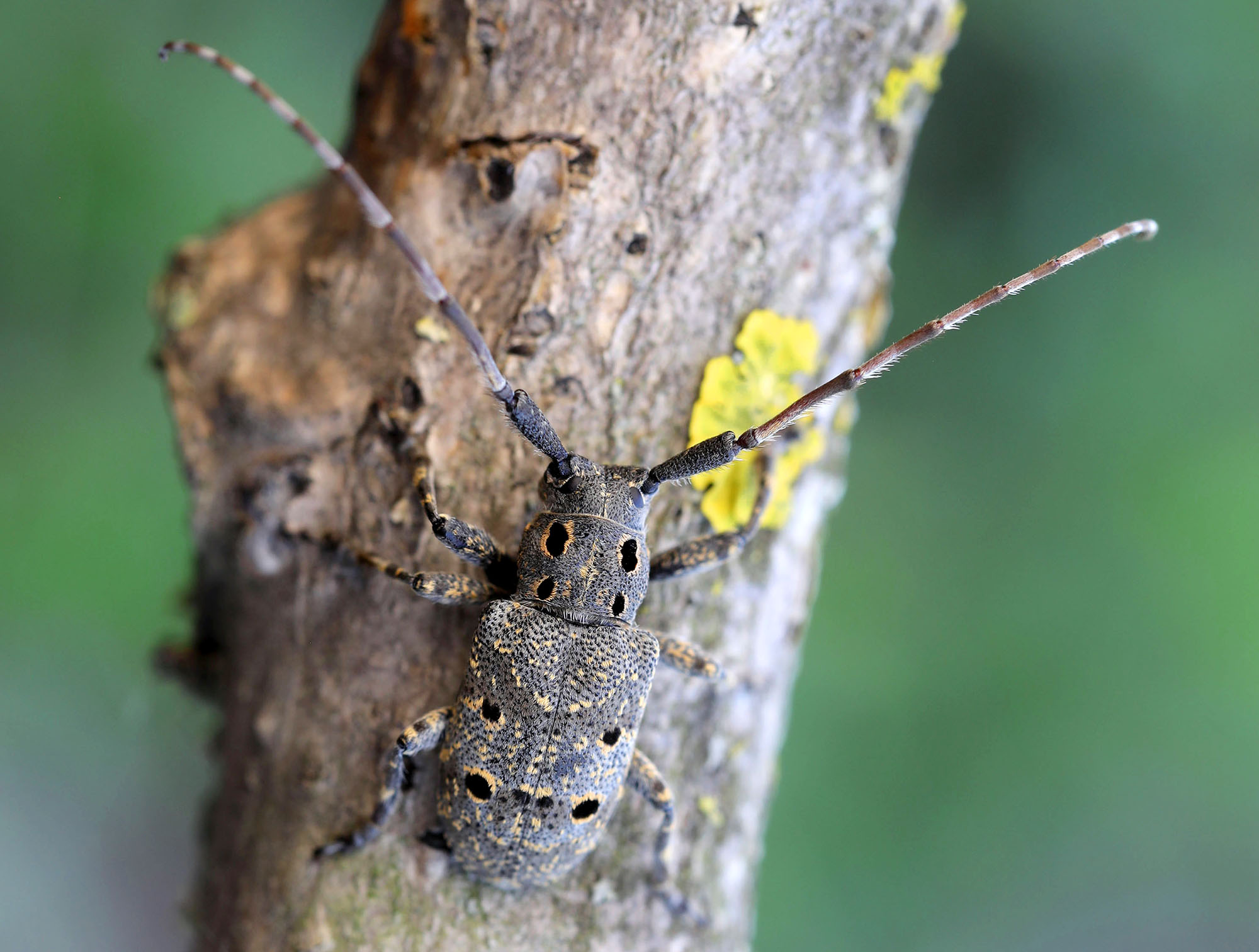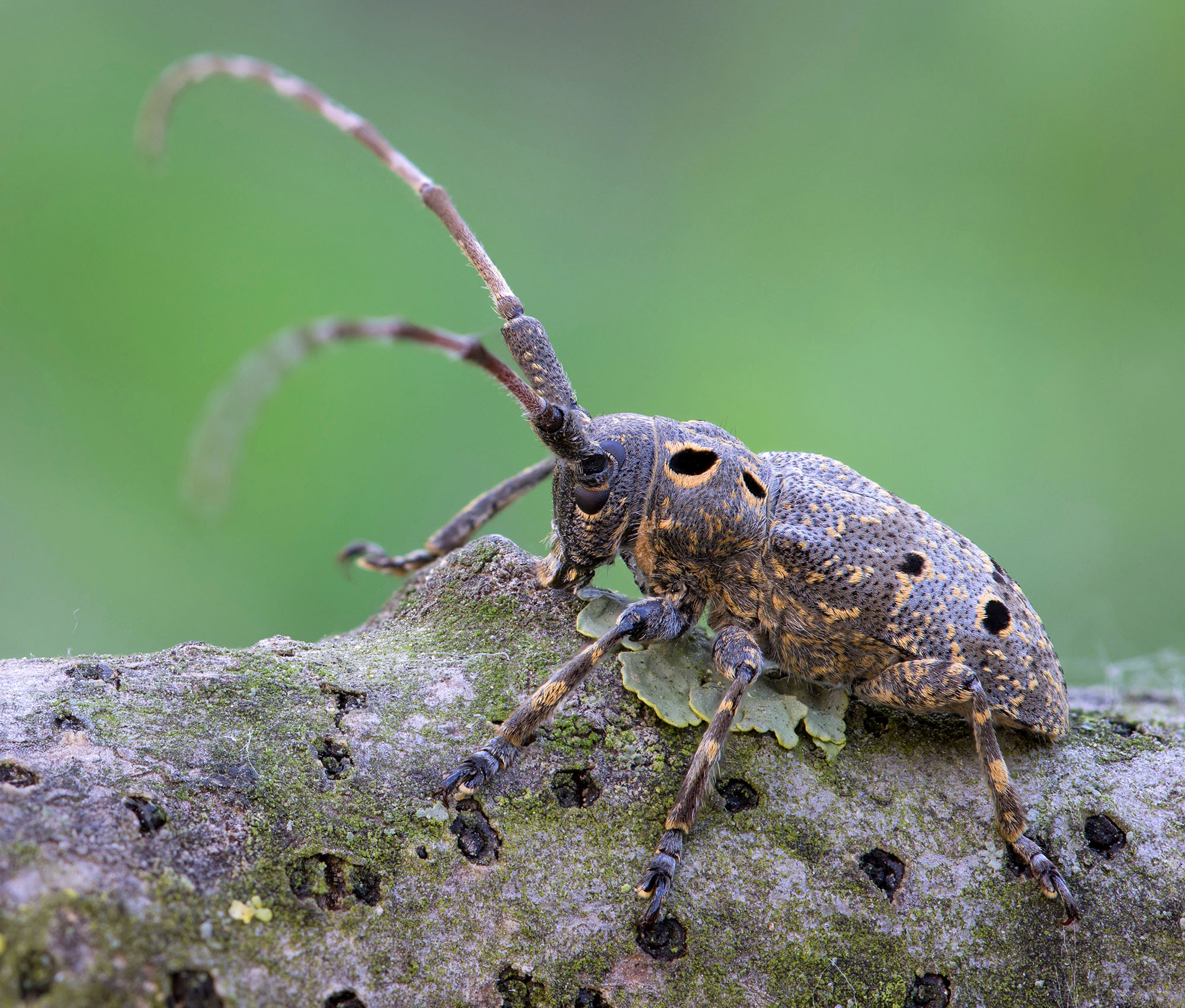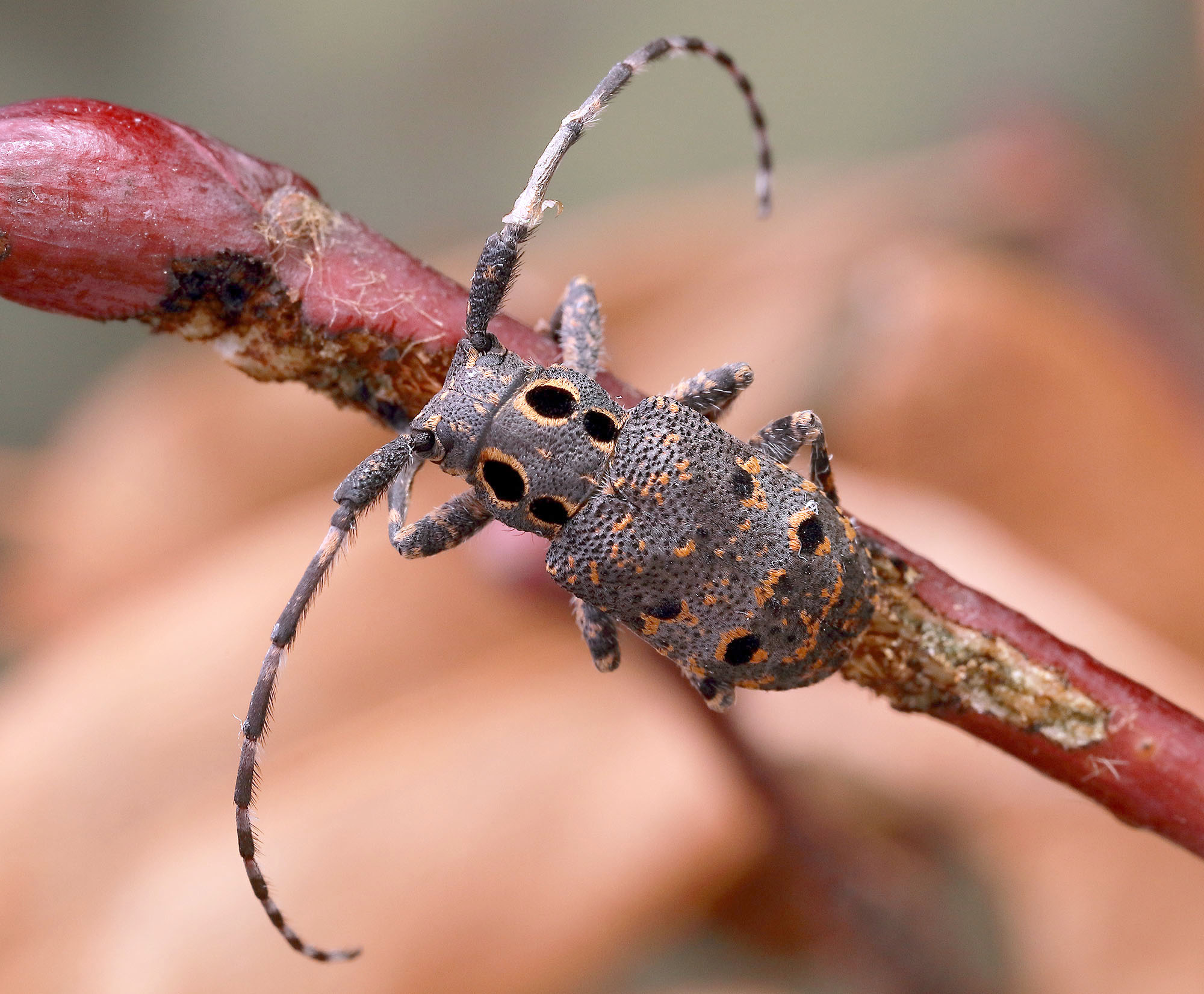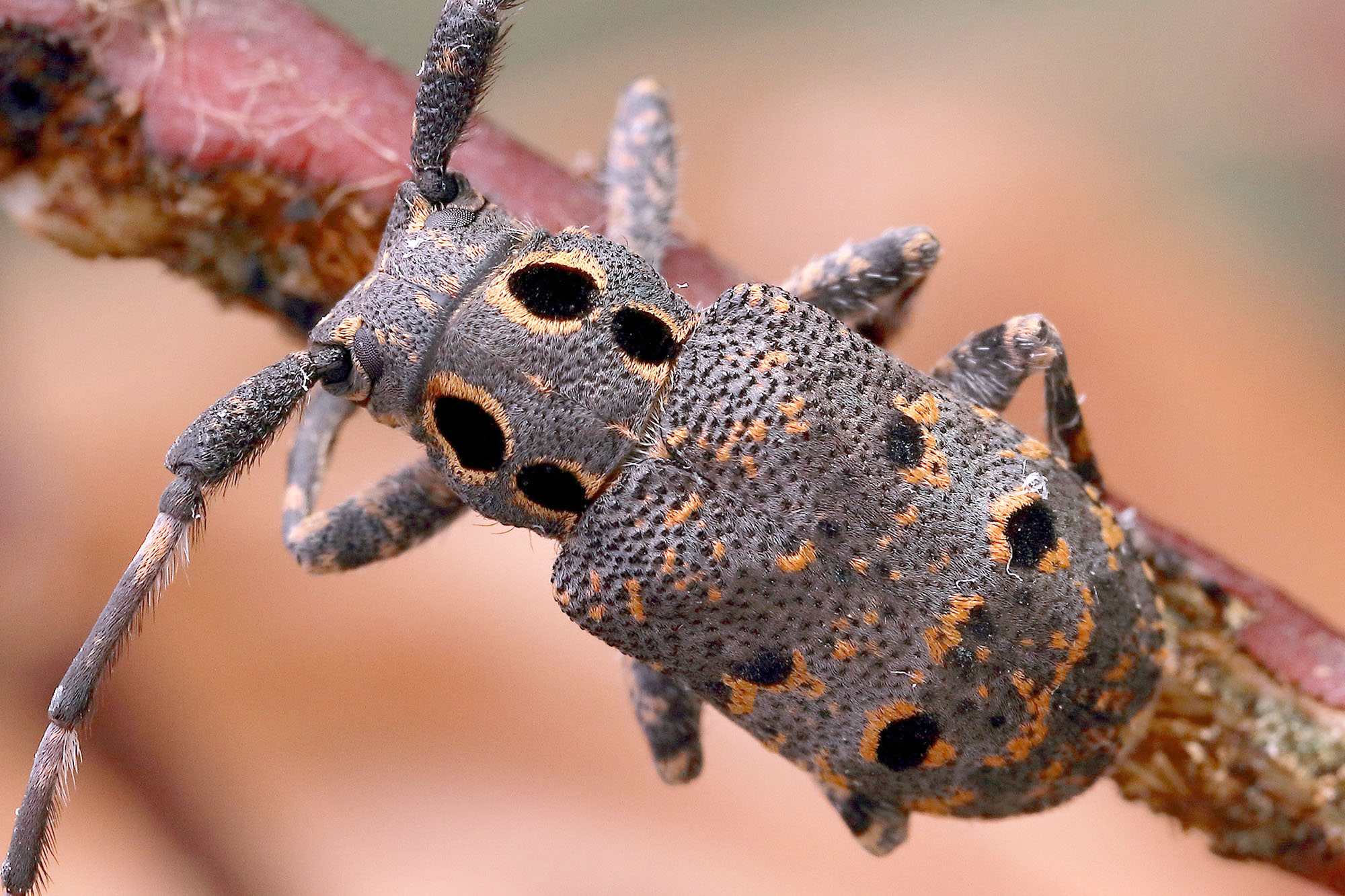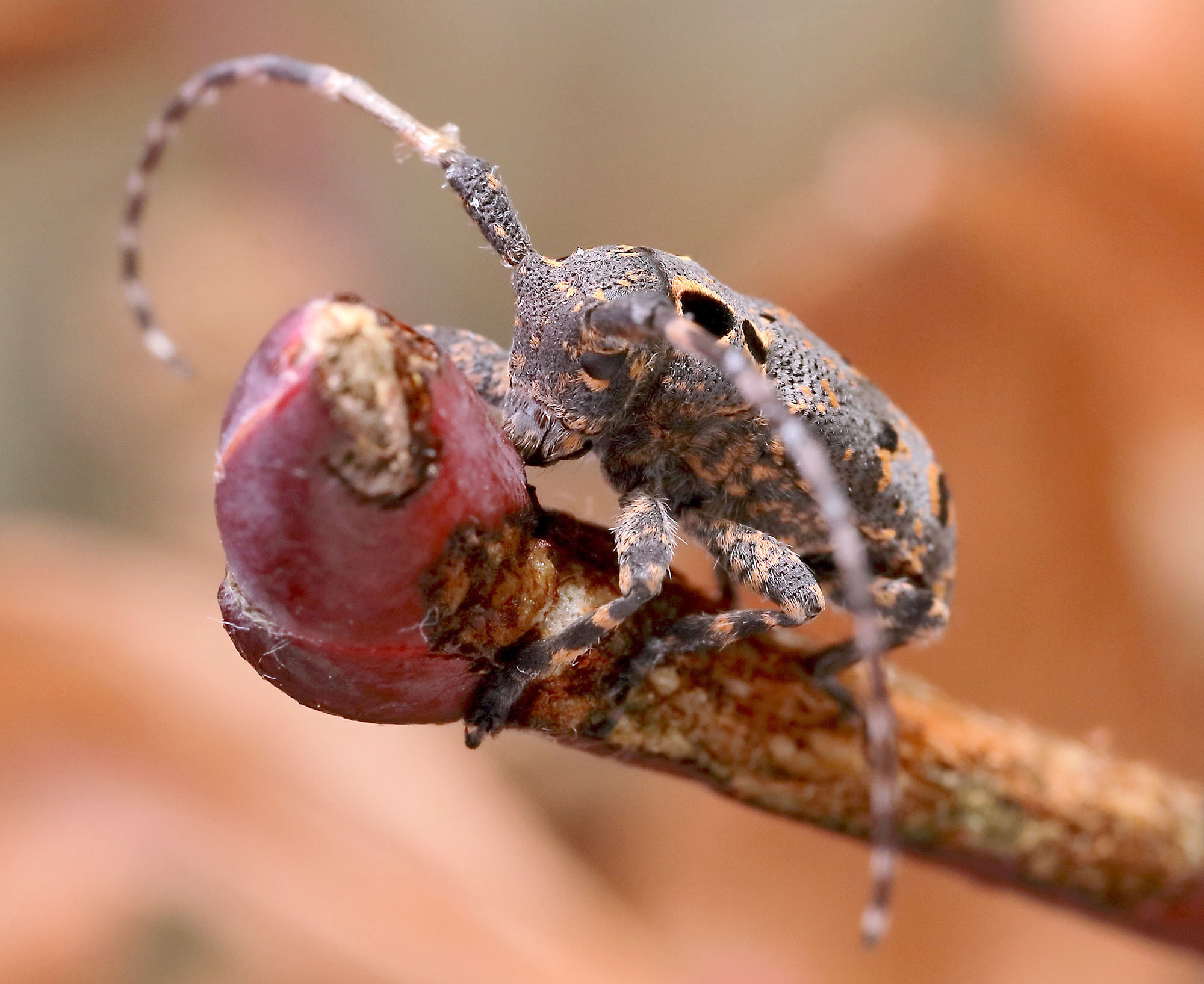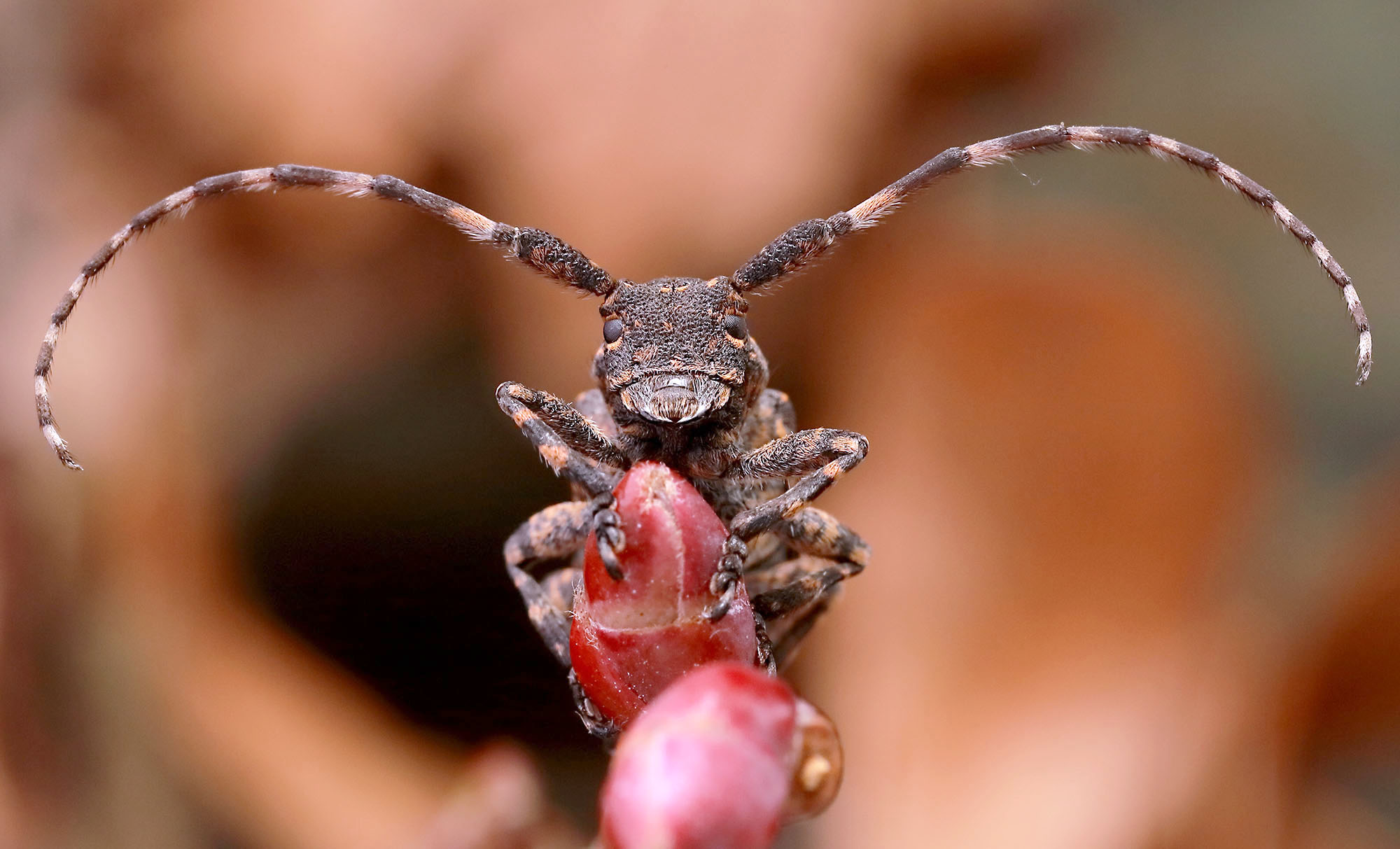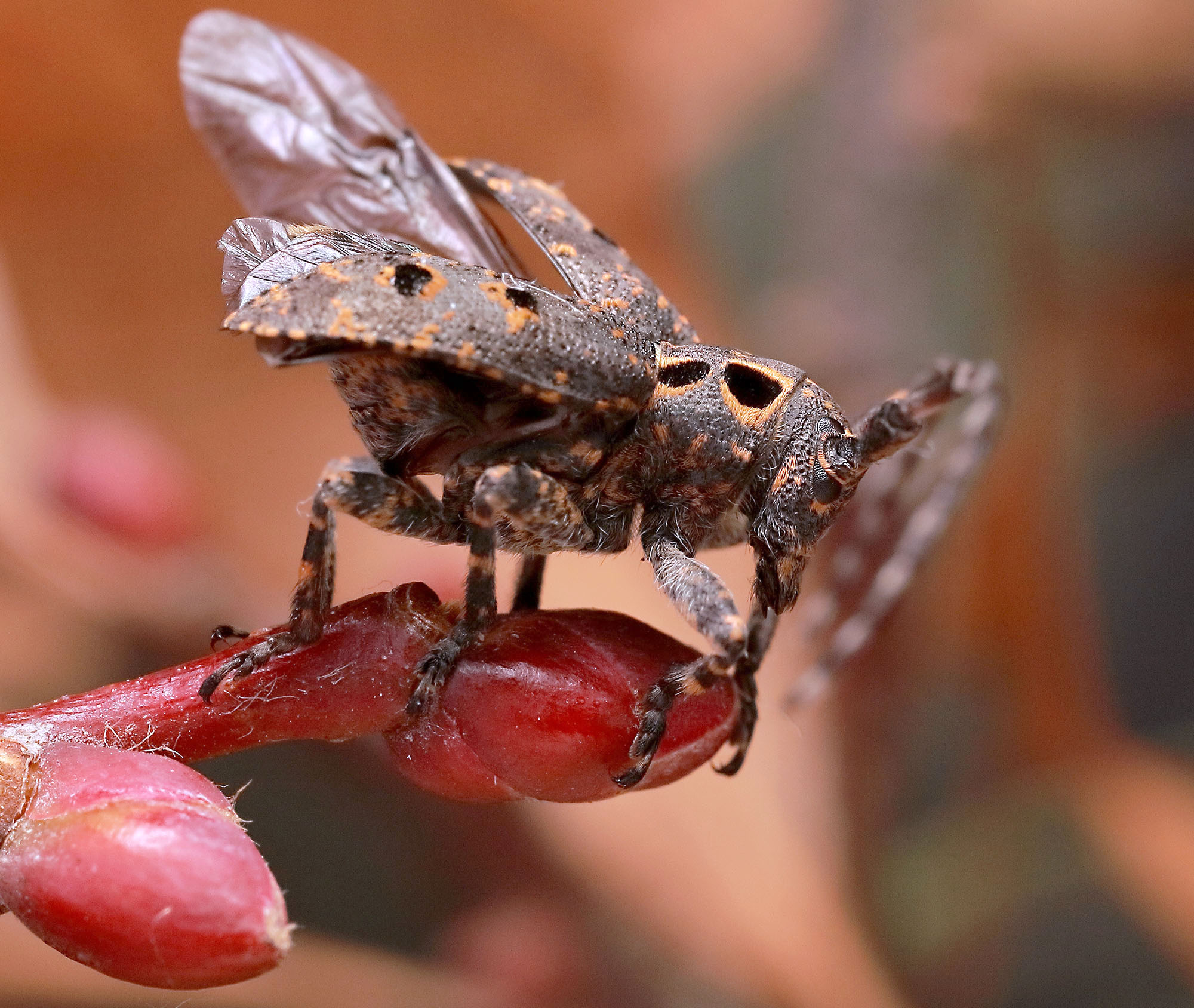Mesosa curculionoides, a beautiful species distributed in Europe, Caucasus/Transcaucasia and Asia Minor, inhabits decidous forests, old parks and tree alleys. Oaks (Quercus spp.) are frequently the preferred host trees
in Central and West Europe. M. curculionoides larvae feed subcortically in thick branches and weaker trunks of dead deciduous trees, where they create relatively
wide irregular galleries. If the bark is thick, the larvae usually create a pupal cell in it, or pupate in a cell made in the sapwood and bark.
Less often, with a thin bark, the larvae enter the sapwood and make a pupal cell shallow below its surface. Life cycle 2 - 3 years. Adults, active from May to Septemeber, are crepuscular/nocturnal and can be found on the host
trees or beaten from their dead branches [❖].
| Body length: | 10 - 17 mm |
| Life cycle: | 2 - 3 years |
| Adults in: | April - August |
| Host plant: | polyphagous in deciduous trees (Quercus, Castanea, Carpinus, Juglans, Tilia, Corylus, Ulmus, Prunus etc.) |
| Distribution: | Europe, Caucasus/Transcaucasia, Turkey |
The depicted living beetles were: (DR) - collected in Tři Grácie folly environs (Lednice–Valtice Cultural Landscape, Břeclav district, South Moravia, Czechia) on May 6, 2018;
(MP/ML) - reared from larva found in a dead lime (Tilia sp.) in Křivoklátsko Protected Landscape Area (Central Bohemia, Czechia) in winter 2021.
The mounted specimen was collected in Arachova (Αράχωβα) village environs (900 m a.s.l., Distomo-Arachova-Antikyra municipality, Boeotia, Central Greece region, Greece) on May 15, 1969.
Collected by Daniel Rydzi, Miroslav Polcar and Udo Schmidt
[❖]
Sláma M.E.F.:
Tesaříkovití – Cerambycidae České republiky a Slovenské republiky / Cerambycidae of the Czech Republic and Slovak Republic.
Milan Sláma private printing, Krhanice, 383pp [pages 283-284], 1998 [ISBN: 80-238-2627-1].
[download  ]
]
